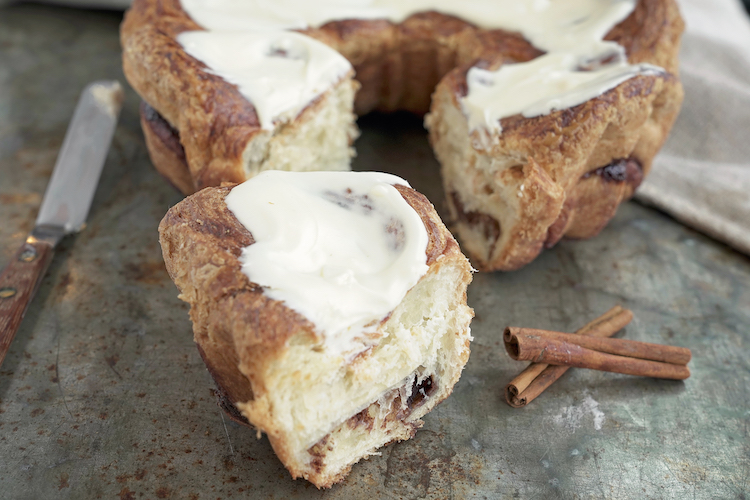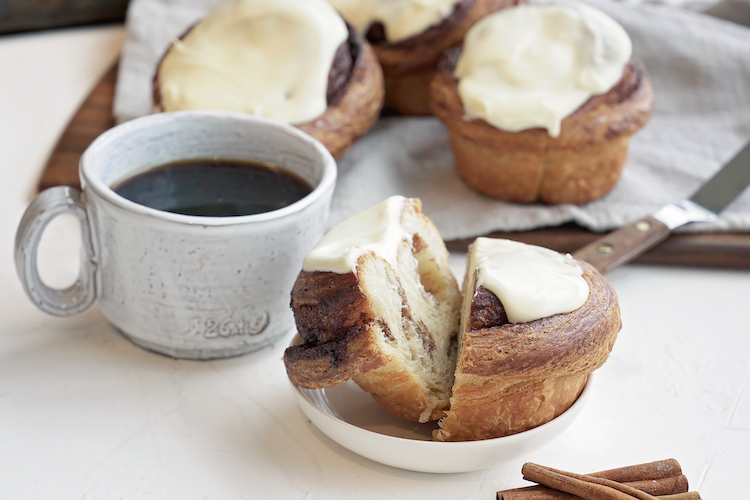When Leslie Mackie opened Macrina in 1993, one of the most time consuming jobs was rolling out the laminated dough for pastries like our hazelnut pinwheels and morning rolls. Leslie considered using laminated dough for cinnamon rolls, but decided not to stress the pastry team more than it already was. Instead, she turned to the bread team for brioche dough.
“The brioche has all the same delicious rich ingredients as the laminated dough but in different proportions,” Leslie says. “I decided to go for a classic more traditional cinnamon roll, similar to my Grandmother Bakke’s homemade version, which leaned toward our brioche dough.”
In 2017, we opened our dream bakery in Kent for wholesale production. Finally, we had temperature-controlled spaces and room for a piece of equipment called a sheeter, which is used for laminated dough. With the new capacity, we launched our line of cornetti, the Italian version of the French croissant.
And now, a new cinnamon roll.
The buttery laminated dough is layered with brown sugar and cinnamon and topped with cream cheese frosting. Leslie says, “They have this succulent texture and taste that sends you to the moon.”
Those of you who love our brioche cinnamon rolls need not worry—after more than 25 years of making them we are not going to stop. But you do have to choose: classic or ultimate. The difference is in the dough. The classic is more bread-like, the ultimate has the flaky texture of our cornetti. Both are filled with brown sugar and cinnamon and topped with silky-smooth not-too-sweet cream cheese frosting.
You can buy the new cinnamon rolls individually in our cafés. The 6-pack Classic Cinnamon Roll Tray is also available in our cafés and at local retailers of Macrina products.


